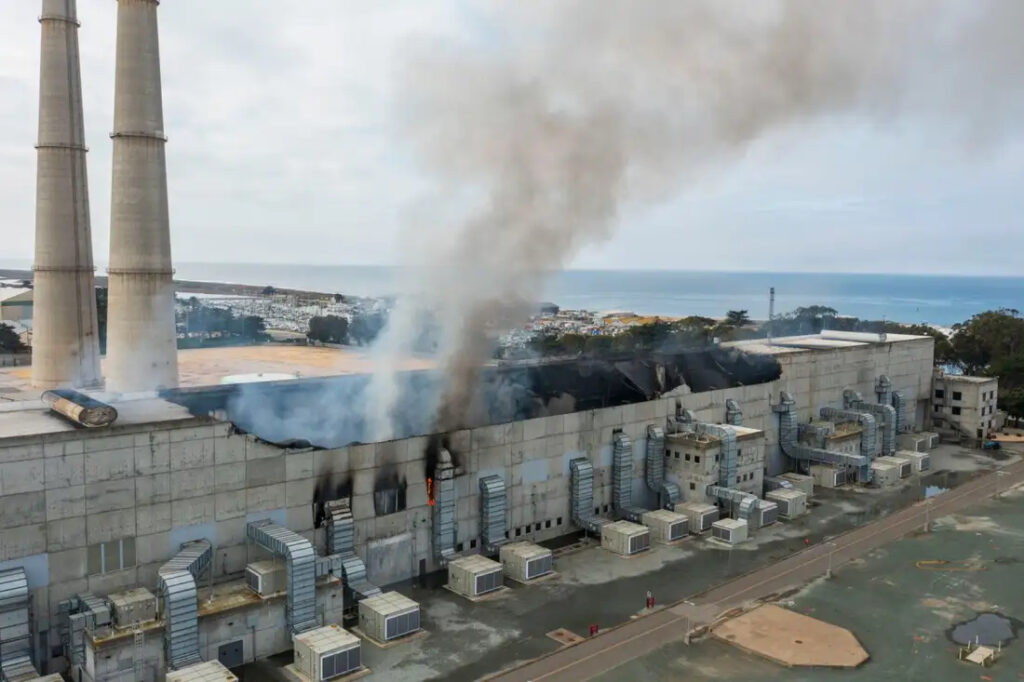A significant fire at the Moss Landing Energy Storage Facility in California has resulted in the destruction of 300 megawatts of energy storage capacity, prompting the evacuation of 1,200 residents and raising health concerns due to smoke plumes. This incident has impacted 2% of California’s energy storage capacity, which is crucial for the state’s transition to renewable energy sources.
Incident Details
- Date and Location: The fire broke out on January 16, 2025, at the Moss Landing Energy Storage Facility in Monterey County, California.
- Extent of Damage: The blaze consumed a concrete building housing lithium batteries, leading to the loss of 300 megawatts of energy storage. Fortunately, other buildings on the site, including additional battery storage and a natural gas plant, were not affected.
- Health Risks: Smoke from the fire may contain heavy metals and PFAS (per- and polyfluoroalkyl substances), which pose potential health risks to local residents and wildlife, including sea otters in nearby wetlands [1].
Response and Safety Measures
- Firefighting Approach: Due to the high temperatures and toxic emissions associated with lithium fires, firefighters allowed the blaze to burn itself out rather than engaging directly. There have been no reported injuries, and air monitoring has not detected hydrogen fluoride, a toxic substance emitted during such fires [1].
- Evacuation Orders: Local officials have advised residents to stay indoors and keep windows and doors closed to minimize exposure to harmful smoke [1].
Industry Implications
- Wake-Up Call: Glenn Church, a member of Monterey County’s Board of Supervisors, described the incident as a wake-up call for the renewable energy industry, emphasizing the need for safer battery systems as the state moves toward sustainable energy solutions [1].
- Historical Context: The Moss Landing facility, owned by Vistra Energy, has previously experienced less severe incidents related to battery overheating and fire suppression system malfunctions. The cause of the recent fire is still under investigation [1].
Future Considerations

- Impact on Energy Storage: The loss of the 300-megawatt facility will significantly affect Vistra Energy’s overall 750-megawatt energy storage capacity and California’s total 13,300-megawatt capacity. The reconstruction of battery capacity could take several years, complicating California’s efforts to rebuild after other disasters, such as the Los Angeles wildfires [1].
- Safety Improvements: Despite this incident, utility-scale battery systems have seen a 97% reduction in failures globally from 2018 to 2023, indicating that while accidents can occur, the industry is moving toward safer practices [1].
The fire at the Moss Landing Energy Storage Facility serves as a critical reminder of the challenges facing the renewable energy sector. As California continues to push for a transition to renewable energy, ensuring the safety and reliability of battery storage systems will be paramount.
Learn more:
- Battery Storage in California Meets New Regulatory Hurdles: How High Can Storage Jump?
- Massive Fire Burning at World’s Largest Battery Storage Facility in CA – Fire Engineering: Firefighter Training and Fire Service News, Rescue
- After Fires, Calif. County to Set Battery Storage Standards



